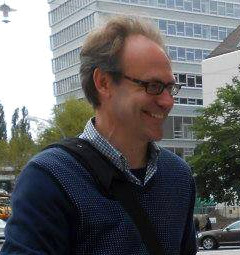
Title: Engineering vascularization - strategies for functional tissues and organs
Plenery talk
Prof. Per Arvid Löthman
Foviatech GmbH, Hamburg, Germany; Kaiserslautern University of Applied Science, Zweibrücken, Germany
Abstract
Vascularization is a challenge but an absolute necessity for biomanufacturing of functional organs and tissues by 3D bioprinting and several other methods.. It is critical for the prolonged survival and functional maturation of the engineered tissues which may lead to functioning organs such as liver and kidney. Ongoing vigorous research has pursued the development of 3D in vitro tissue models to replicate the key aspects of human physiology by incorporating relevant cell populations and adequate environmental cues. In this context, one important aspect is to leverage three-dimensional (3D) bioprinting in the fields of tissue engineering and regenerative medicine which has rapidly accelerated progress toward the development of living tissue or constructs biomedical devices. In particular, vascularization is critical for the prolonged survival and functional maturation of the engineered tissues, which has remained one of the major challenges in the establishment of physiologically relevant 3D in vitro models. To this end, 3D bioprinting can efficiently generate solid and reproducible vascularized tissue models with high architectural and compositional similarity to the native tissues, leading to improve the structural maturation and tissue-specific functionality. Reviewed are, multiple bioprinting strategies which have been developed to vascularize tissues and organs by spatially controlled patterning of vascular precursors or generating readily perfusable vascular structures. Advanced 3D bioprinting strategies for vascularized tissue model development present the key elements for rebuilding functional vasculature in 3D-bioprinted tissue and organ models. Indeed there are still challenges and future of 3D bioprinting-based vascularized tissues but with a thorough understanding of vascularizationwe believe that 3D Bioprinting remains a promising technology for functioning vascularized organs and tissues.
Biography
Dr. Per A. Löthman obtained his Ph.D. degree from Twente University , The Netherlands in the field of Macroscopic Magnetic Self-assembly and conducted research in Canada, France and Germany on carbon nanotubes, Graphen and related nanomaterials. His research is interdisciplinary and involve BioNanotechnology including DNA, S-layers, Viruses (archaea, bacteriophages), Biomolecular Architecture. Botany and functional surfaces. Dr. Löthman has published over 60 scientifical articles, several book chapters and serves as a reviewer for several journals such as Journal of Bioanalytical and Analytical Chemistry, Journal of Colloid and Interface Science, Thin Solid Films, Sensors and Actuators, Microsystems Technologies, Biophysical Reviews and Letters, He is Senior Research Scientist at Foviatech GmbH in Hamburg, Germany, a young innovative high-tech company in the field of advanced materials and artificial intelligence, and a lecturer in Nanomedicine, Nanopharmacy and Nanomaterials (Kaiserslautern University) and Mechatronics Systems and Design (Hamburg University), Germany.
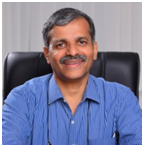
Title: Engineering at the Nanoscale: A Strategy for Developing High Performance Functional Materials from Agrowaste.
Plenery talk
Prof. Sabu Thomas
Vice Chancellor, Mahatma Gandhi University, Kerala, India
Abstract
Biography
Sabu Thomas is currently the Vice-Chancellor of Mahatma Gandhi University, Kottayam, Kerala, India. He is a Professor at the International and Inter University Centre for Nanoscience and Nanotechnology and Full Professor of Polymer Science and Engineering at the School of Chemical Sciences of Mahatma Gandhi University, Kottayam, Kerala, India. His ground-breaking research has covered the areas of polymer science and engineering, polymer nanocomposites, elastomers, polymer blends, interpenetrating polymer networks, polymer membranes, green composites and nanocomposites, nanomedicine and green nanotechnology. Prof. Thomas has received several national and international awards in recognition for his work, and recently received Honoris Causa (DSc) from the University of South Brittany, Lorient, France, in recognition for his contributions to polymer science and engineering. Prof. Thomas has published over 1400 peer- reviewed research papers, reviews and book chapters. He has co-edited more than 183 books. Currently he is having an H index of 127.
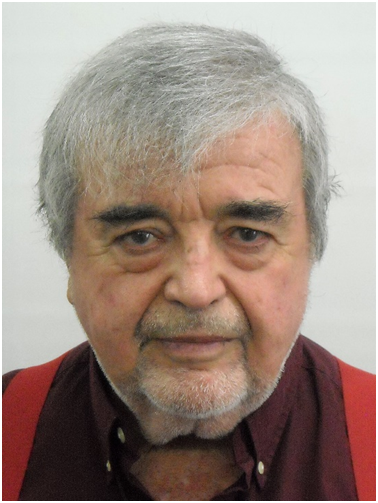
Title: The Rocky Road Towards Understanding Passivity and Passivity Breakdown
Plenery talk
Prof. Digby D. Macdonald
Nuclear Engineering and Materials Science and Engineering, University of California, Berkeley, USA
Abstract
Biography
Digby D. Macdonald is a native of New Zealand, a naturalized US citizen, and is a Professor in Residence (semi-retired) in the Departments of Nuclear Engineering and Materials Science and Engineering at the University of California at Berkeley. He holds B.Sc. and M.Sc. degrees from the University of Auckland and a Ph. D. from the University of Calgary (1969), all in Chemistry. He specializes in the growth and point defect structures of thin oxide, passive films on metal surfaces under extreme environmental conditions and developed the Point Defect Model for describing the physico-electrochemistry of such systems for which he was nominated for the Nobel Prize in Chemistry in 2011. He has also developed the modern theory of stress corrosion cracking, corrosion fatigue, and pitting corrosion in terms of the deterministic Coupled Environment Models and is a pioneer in the modern form of Electrochemical Impedance Spectroscopy. One of his major activities has been the modeling of the electrochemical and corrosion properties of structural materials in the coolant circuits of operating, water-cooled nuclear power reactors and recently modeled for DOE the coolant circuit of the ITER that is currently being built in Cadarache, France. ITER is the World’s first fusion technology demonstration reactor. He has also contributed to developing the science base for the disposal of High-Level Nuclear Waste in the US (Yucca Mountain), Belgium, and Sweden. Prof. Macdonald has published more than 1000 papers in peer-reviewed journals and conference proceedings and has published four books. He is a Fellow of the Royal Society of Canada, the Royal Society of New Zealand (the “National Academies” of those countries and is a Member of the EU Academy of Sciences. He enjoys a H-index of 82 and his papers have been cited over29,740 times.
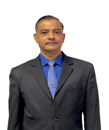
Title: Engineered Fluorescent Ag-Cu Nano shells for Upcoming Biomedicine
Plenery talk
Prof. Sib Krishna Ghoshal
Physics Department and Laser Center, Universiti Teknologi Malaysia
Abstract
Biography
Sib Krishna Ghoshal (Condensed Matter Physicist) is Professor at Physics Department and Laser Center, Faculty of Science, Universiti Teknologi Malaysia. He received PhD from JNU (Delhi) and was postdoctoral fellow at Brandeis University (USA) and IIT (Delhi) & Oxford University (UK). He published over 650 research articles, 18 book chapters and 7 books with Google Scholar h-index of 46, i10-index of 152 and citations of 7372. He received 58 research grants, two patents on the proposed anticancer drug formulation and plasmon humidity sensor, supervised 28 PhD, 80 MSc & 60 Undergraduate theses. He is recognized as Top 2% of Scientists in their Field Worldwide in 2019 and 2021 by Stanford University (USA) rankings.
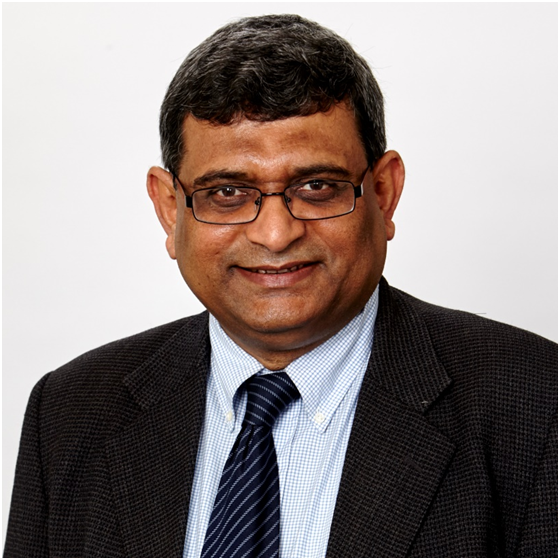
Title: Graphene Coatings: A Disruptive Approach to Corrosion Resistance
Plenery talk
Prof. Raman Singh
Monash University, Australia
Abstract
Biography
Professor Raman Singh’s primary research interests are in the relationship of Nano-/microstructure and Environment-assisted degradation and fracture of metallic and composite materials, and Nanotechnology for Advanced Mitigation of such Degradations. He has also worked extensively on use of advanced materials (e.g., graphene) for corrosion mitigation, stress corrosion cracking, and corrosion and corrosion-mitigation of magnesium alloys (including for the use of magnesium alloys for aerospace, defence and bioimplant applications). Prof Singhis a senior professor at Monash University, Australia. He is a Guest Professor at ETH Zurich, Switzerland (2020, 2023, 2024), US Naval Research Lab, Indian Institute of Science, and University of Connecticut. He worked as a scientist at Indian Atomic Energy and as a post-doc fellow at University of New South Wales, Australia. Prof Singh’s professional distinctions and recognitions include: Guest Professor of ETH Zurich, Editor of a book on Cracking of Welds (CRC Press), Lead Editor of a book on Non-destructive Evaluation of Corrosion (Wiley), Editor-in-Chief of an Elsevier and two MDPI journals, leader/chairperson of a few international conferences and numerous plenary/keynote lectures at international conferences, over 265 peer-reviewed international journal publications and 15 book chapter, and several competitive research grants (that includes 4 Discovery, 7 Linkage and one ITRH grants of Australian Research Council). Prof Singh has supervised 52 PhD students. His vibrant research group at Monash University comprises of PhD students from different disciplines (Mechanical, Chemical, Materials and Mining Engineering, and Science) as well as from different cultural backgrounds (Australian, Middle-eastern, Chinese, Malaysian, Indian, African, North American and Israeli).
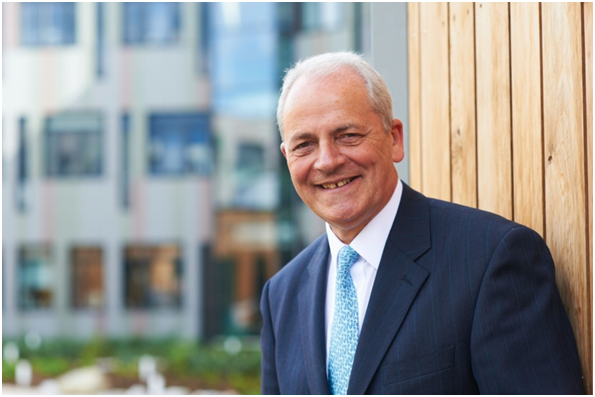
Title: Multicomponent High-Entropy Cantor Alloys
Plenery talk
Prof. Brian Cantor
Department of Materials, University of Oxford, UK
Abstract
Biography
Brian Cantor is an Emeritus Professor in the Department of Materials at the University of Oxford, a Research Professor in the Brunel Centre for Advanced Solidification Technology at Brunel University, a Trustee of the UK’s National Science Museum Group, Co-Director of the UKRI Interdisciplinary Research Centre for Circular Metals, and a Chief Editor of the Springer-Nature research journal High Entropy Alloys and Materials. He was previously Vice-Chancellor of the University of York and Bradford University, Head of Mathematical and Physical Sciences at the University of Oxford, and a research scientist and engineer at General Electric Research Labs in the USA; he also worked briefly at Banaras Hindu University, Washington State, Northeastern, IISc Bangalore and the Kobe Institute. He founded and built up the World Technology Universities Network, the UK National Science Learning Centre, the Hull-York Medical School, Oxford’s Begbroke Science Park, and the York Heslington East campus. He was a long-standing consultant for Alcan, NASA and Rolls-Royce, and editor of Progress in Materials Science. He invented the new field of multicomponent high-entropy alloys and discovered the so-called Cantor alloys.Among many honours and prizes from different countries around the world, he is a Commander of the British Empire (CBE) and a Fellow of the Royal Academy of Engineering (FREng).
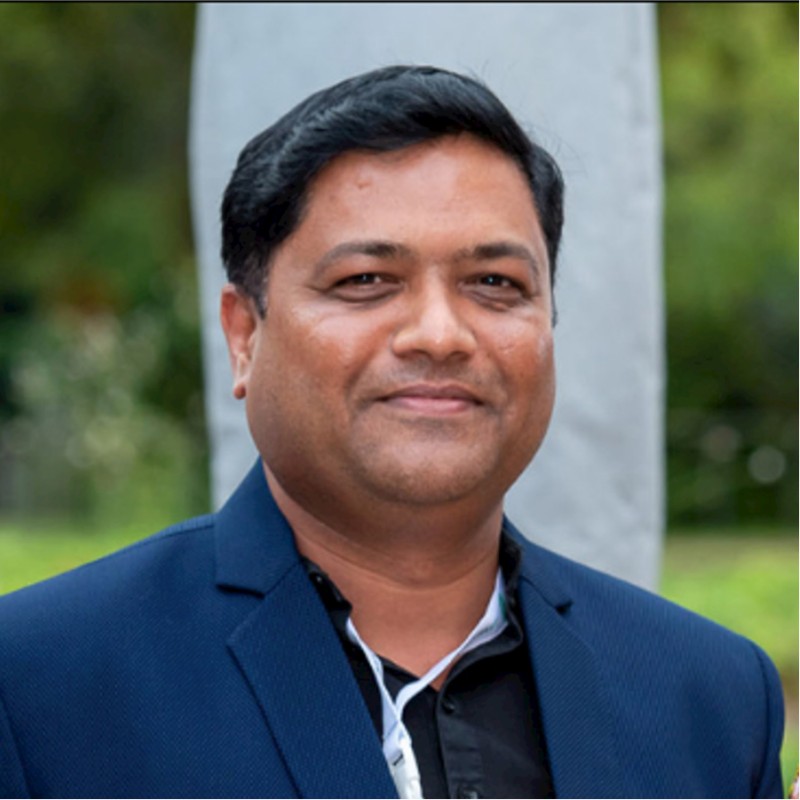
Title: TOWARDS NATURALLY HEALING DENTAL IMPLANTS
Keynote
Dr.-Ing. Yogesh Sonavane
Founder, Rintegrate Med Tech, Berlin, Germany
Abstract
Biography
Dr.-Ing. Yogesh Sonavane is a Founder of Rintegrate Med Tech, Berlin based starup. His experƟse lies in Biomaterials, Material Science along with Chemical and Process Engineering. He is looking aŌer business development acƟviƟes. Rintegrate Med Tech aims to make completely resorbable implants from syntheƟc bone material and their composites. They are developing a material which is structurally similar and chemically adaptable with human bone. These implants will allow natural bone to grow through them and are integrated into the natural bone as it heals. Thus, there will be no post healing removal required with their material and the chance of rejecƟon by the body is very low. The state of art presents syntheƟc bone material for low load bearing applicaƟons. Our technology intends to bring a change in the current scenario.

Title: The method of systematization of corrosion and associated complications of the oilfield technological circle from wells of Up Stream to Middle and Down Stream’s and Utilization Sub circles as the chain of object-oriented specialization of the materials, treatments and technical solutions
Keynote
Mr. Valeriy V. Bykouski
Senior Scientist , Radiobiology Institution of National Academy of Science of Belarus, Russia
Abstract
Biography
Valeriy V. Bykouski (Bykovskiy) completed Master of Science equal degree from Chemistry Department of the Chemistry and Biology Faculty Gomel State University named after F. Scorina, Belarus. He has been working as a Senior Scientist of Radiochemistry Department at Radiobiology Institution of National Academy of Science of Belarus, and as a Senior Scientist of Chemistry, Corrosion Protection, Material specialization and testing, Microbiology and associated researches Department in NOC Belarusneft, LLC LUKOIL and LLC LUKOIL-Engineering for onshore and offshore objects. He has published more than 20 papers and 5 of which in reputed journal.
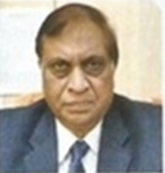
Title: Fabrication of UV detector by making heterojunction on Silicon Nanowires on Si Chip
Keynote
Dr. V.K. Jain
Distinguished Scientist & Professor, Amity University Noida, India
Abstract
Biography
Dr Jain has done his Ph.D. in Solid State Physics from IIT Delhi. He joined Solid State Physics Laboratory and worked as Director Grade scientist. He was head of the silicon devices and Micro Electro Mechanical Systems (MEMS) division and developed many new technologies. He has also developed the technology for space quality silicon solar cells and among these technologies a few have been transferred to industries. His result of electro-luminescence in porous silicon was considered as the first International observation and it was reported as NEWS by Photonics spectra USA, Electronics Asia. He is among those, who have started the MEMS programme in the country and also produced many devices. Dr. Jain was also associated with the National Programme on Smart materials & MEMS technology from the beginning. He has published more than 200 papers in National & International journals, edited a few books and has filed 45 patents. He has received the Technology award in 2002. He worked as Emeritus Scientist of CSIR at NPL up to June 2007. He has made a multidisciplinary department with most modern facilities in Amity University. He has also brought a large number of research projects from different Gov. funding agencies including many ongoing projects on solar energy and thermal energy storage. He has organized many International and National conferences, delivered invited lectures at many places, and visited many laboratories and institutes abroad. He got the Award in 2012 from “Power of Ideas” (DST programme) and from Royal Academy of U.K. “On the pocket friendly reusable water purification system” based on nanomaterials. Very recently technologies developed of room temperature LPG sensor, flyash battery and cleaning of industrial waste water technology using nanonmaterials have been transferred to industries for commercialization. He is working in the areas of solar energy, sensors, bio sensors, water purification MEMS, Nanomaterials and on some others. Among his recent contributions, his Agri-voltaic work, which can double the income of the farmers is very popular. Generation of electric power from the waste water and simultaneously cleaning the same water is another outstanding work. He has started two new institutes at Amity University, Amity Institute of Advanced Research and Studies (Materials & Devices) & Amity Institute of Renewable and Alternative and working as the Distinguished Scientist & Professor.
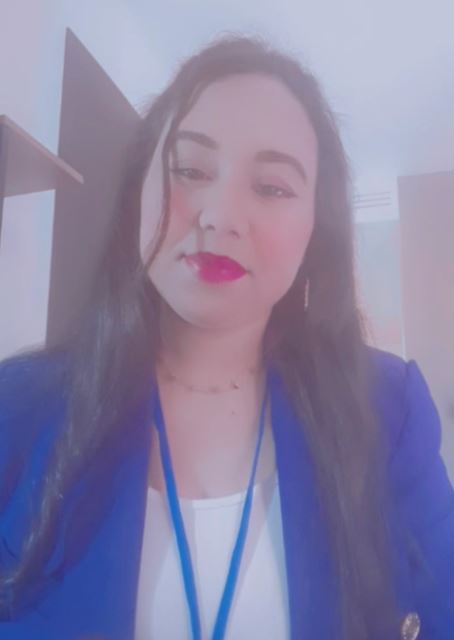
Title: Materials for sodium-ion battery anode with a 2D heterostructure based on phosphorus
Invited talk
Dr. Houda Khattab
Faculty of Sciences, Mohammed V University in Rabat, Morocco Faculty of Sciences, Mohammed V University in Rabat, Morocco
Abstract
Biography
Houda Khattab is a Ph.D. student in Condensed Matter Physics and Materials Science at the Laboratory of Condensed Matter and Interdisciplinary Sciences (LaMCScI), which is part of the Faculty of Sciences at Mohammed V University in Rabat. She has previously worked as a part-time assistant professor of Physics at the same university. She is interested in studying materials for energy storage, especially the properties of nanomaterials and their applications in ion batteries. Currently, her research focuses on phosphorene, a 2D material with excellent properties, which she is studying using theoretical methods such as functional density theory (DFT). Additionally, she has experience in modeling and simulation with various tools, such as Quantum espresso, WIEN2k, Monte-Carlo, and LAMMPS codes for calculation, VESTA and Phonopy, and XCrySDen for structure molding. Houda has participated in several international schools and conferences.

Title: Welding process & genetic algorithm applied in advanced materials
Invited talk
Dr. Gladys Yerania Perez Medina
Prof. at Corporación Mexicana de Investigación en Materiales SA de CV, Mexico
Abstract
Biography
Dr. Gladys Yerania Perez Medina have been working for more than 10 years mentoring and teaching materials engineering and welding topics. She contributed to the development of master welding in COMIMSA México and received international recognition. She has been the sponsor of more than 20 students of Specialty of Welding, and 10 earning their Master’sdegree. She has been published in journals with high impact in welding research, publications in conference proceedings, and book chapters
“ Will be updated soon...”
“ Will be updated soon...”
+91 9491 456 452
Door No.200, Immidhihalli Main Road, Whitefield-560066, Bangalore, India
About Us
Global Scientific Guild organizes conferences and webinars to promote quality research and real world impact in an atmosphere of true international co-operation between scientists, doctors, professors, practitioners, engineers and industry by bringing together the world class renowned personalities to discuss the latest developments and innovations at one common platform.